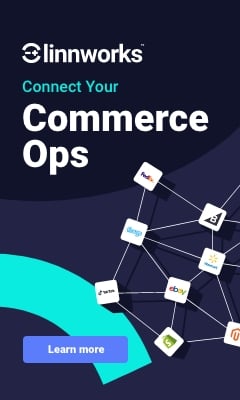Insight: NRF review
Retail executives and leading IT providers converged on New York City for the annual retail technology event Retail’s Big Show, organised by the NRF, to view the latest cutting edge solutions.
Investing in people
Along with the IT came a realisation that some of the old school aspects of retail remain vitally important – notably people and physical stores. The main keynote on the first day of NRF came from Doug McMillon, CEO of Wal-Mart who highlighted the point about people being the key at a time when the industry is going through a digital transformation.
“It’s a people business and as we make investments in technology then we want our people to come with us [on the journey] so we need to look after them. It’s a smart strategy to invest in them,” he says, while detailing how the company has been increasing wages for store employees and better training to deal with new technologies that are impacting their jobs.
Technology is also affecting the way that people can be more effectively managed. David Rogers, sales and marketing director for EMEA at Reflexis – that handles task management and work force management, has a secret weapon.. Real Time Task Manager. It connects various systems together in a retailers’ business and enables automated decisions to be made about assigning people to tasks based on real-time events in the business.
By using Real Time Task Manager to take in data from a myriad of sources, for example, monitoring freezer temperatures and only assigning employees to check them if they drop below a certain level can radically reduce staff costs. Likewise, if there are any delays with trucks arriving into stores then employees can be automatically assigned to other tasks. Some of these could involve more value-added activities in-store.
Improving the in-store experience
Ensuring customers receive a better in-store experience is very high on the agenda of all retailers. At NRF there were many technology solutions that are helping with this and they all added to the view that the physical store will remain a vital component of the overall retail experience.
Highlighting this trend is Rent The Runway that has an innovative model of renting out clothing. Although it started out with an online-only model it has opened five stores, which became massively popular after the company launched its unlimited subscription service.
Hampton Catlin, senior director of engineering at Rent The Runway, admits to queues going around the block with people returning their rental goods and collecting their next items. The solution has been a kiosk developed by Aila Technologies and comprising an iPad using Alia’s proprietary scanning software.
Version two of the solution enables self-service and involves customers scanning their own QR code, which throws up their account details, and then they then scan the product barcodes, which immediately updates the inventory management system.
Facial recognition shows is face
Intel was also showcasing a number of technologies to enhance the in-store experience including a MemoMi Memory Makeover mirror that is being used in Neiman Marcus stores to enable the virtual application of make-up onto the customers’ face. This uses facial recognition technology that was a major feature of NRF this year.
It was also integral to the digital shelf-edge labelling solution AWM SmartShelf that is being used by Wal-Mart in five stores. Ryan Parker, from the Internet of Things retail solutions group at Intel, says that if people are close by then the prices are displayed on the shelves otherwise promotional images are instead displayed.
“We’ll get to the point whereby retailers will know [individual] shoppers and can then build algorithms to drive more personalised messaging,” he says. This is already being built into a solution for growing retailer Lolli and Pops whereby the camera recognises the customer entering the store and can then surface data on this individual to store employees’ tablets. It also uses Artificial Intelligence (AI) to suggest product recommendations based on past purchases and popular items with other similar customers.
Artificial Intelligence to the fore
AI was particularly prevalent at NRF this year – with many solutions incorporating the technology. Among them was Volumental, which uses 3D camera technology to extremely accurately measure people’s feet and is working with retailers including New Balance and Fleet Feet Sports.
Ellen Dorsman, key account manager at Volumental, says: “Using AI we take all the information from all the stores and can look at the past history of a customer and other people like them to find relevant recommendations.”
The technology has enabled returns with one retailer to be reduced from 7% to 4% and for conversions at New Balance to increase by 20% versus traditional shoe fittings with a sales employee involved.
Real robotic solutions
AI is also integral to many robotics solutions that rely on visual data to operate. John Miller, CEO of Cali Group – that operates 50 CaliBurger restaurants around the world detailed how the company has been developing ‘Flippy’ to flip burgers at its Pasadena outlet by using AI over the past two years.
“We’re linking a robotic arm and AI. The vision of the patty on the grill results in constant adjustments being made to the robot. It’s taken two years of training and now we are ready to sell the robotic arm and the brain [to other restaurant operators] to automate the process,” he says, adding that it will also be rolled out across the CaliBurger chain
Chris Palmer, cognitive offering lead at IBM – who’s Watson solution is integral to many chatbots including those used by the likes of Shop Direct, Staples, North Face and gifting retailer 1-800 Flowers – warns that AI is being over-hyped by some vendors who are suggesting it can be used in almost all circumstances.
But he is still massively bullish about the prospects for AI and points to its use to manage inventory on a hyper-localised basis: “We are trying to look at retail stores and how sales are often affected by local events and weather etc…We could determine what items could go into a store by quantifying the effect these elements have on potential sales.”
IBM has been working with Unilever and other brand owners and has found 3-5% uplifts can be achieved in net sales when hyper-local store formats are employed.
Visibility of inventory
Such changes are dramatic for retailers but in many cases the solutions only have value when the retailer has full visibility of their inventory. This is something River Island knows very well having undergone a major digital transformation that has given it a highly valued single view of its stock.
Doug Gardner, CIO of River Island, says the company worked with Oracle to deliver a Merchandise Financial Planning solution that involved stopping the project six months in and only restarting it after the retailer had extended the remit of the project when it became apparent that implementing such a system would impact all aspects of the business.
“We uncovered structural problems. We had to look at the bigger question of building an omnichannel business. It was about our whole digital strategy. We stopped and then restructured the whole of our IT,” he explains.
What this has delivered is a successful central system that has removed spreadsheets and enables data to be viewed across the business in real-time. “We can now see patterns in the data that comes from having a central pot of data. We’ve seen huge efficiency improvements,” says Gardner.














